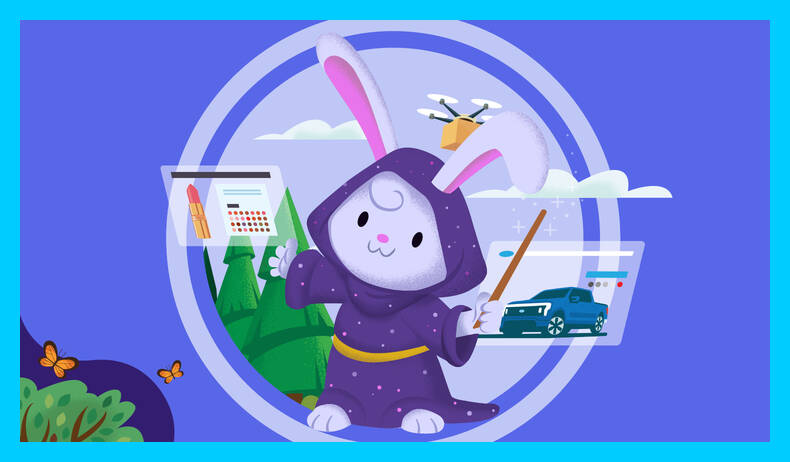Online shopping and booking have grown tremendously in the last few years. For a personalized experience, some of these sites offer a ‘chat now’ option, with people on standby, ready to respond, 24/7. While text chatting a user might think they are conversing with a real human executive or agent. However, that’s not always the case, as now there is a new technology named ‘bots’ — essentially computer program agents that converse with humans in natural language.
 Bots help brands interact with their consumers from messaging apps or voice interfaces for enquiries, shopping, promotions and customer support. Today, bots are getting popular as they are about to replace the friction and in-inefficiencies associated with apps such as: multiple installation of apps, multiple updates, multiple interfaces to remember, storage space, battery consumption etc. Bots offer users a simple and consistent user interface. Bots can also have a personality and can interact with the consumer in a snappy and engaging manner, and increase the engagement level of consumers with brands, leading to higher conversions, retention and satisfaction.
Bots help brands interact with their consumers from messaging apps or voice interfaces for enquiries, shopping, promotions and customer support. Today, bots are getting popular as they are about to replace the friction and in-inefficiencies associated with apps such as: multiple installation of apps, multiple updates, multiple interfaces to remember, storage space, battery consumption etc. Bots offer users a simple and consistent user interface. Bots can also have a personality and can interact with the consumer in a snappy and engaging manner, and increase the engagement level of consumers with brands, leading to higher conversions, retention and satisfaction.
In her blog Julie Ask, Analyst at Forrester Research, says bots will evolve into a mechanism to help consumers get stuff done both on their mobile phones and with virtual agents (such as Amazon’s Echo). She says bots and the chat platforms provide an amazing opportunity for brands to deliver contextual experiences on borrowed mobile moments. This is the first step on a journey towards a bright future where consumers no longer orchestrate their needs through content and services, but sit back and let the technology work for them.
Bots are a bridge to business to be available; to engage, acquire and retain the huge and highly engaged user base on messaging platforms.
Why business should invest in bots?
There are more than 3 billion users on messaging apps every month, that’s more than all the social networks put together. These users are highly engaged and a whopping 45 percent of millennials wanted to interact with brands on messaging platforms itself. Brands are finding it hard to reach these users on the traditional channels such as email, SMS, social media — that are both crowded and expensive. Bots are a bridge to business to be available; to engage, acquire and retain the huge and highly engaged user base on messaging platforms.
Farooq Adam, Co-Founder of Fynd asserted, “Any business in a customer facing role should invest in smart bots to provide an easier way to interact and access services. For example, if you run a coffee shop and have a large repeat user base, customers should be able to get one by simply typing ‘the usual at 3 PM’. Fynd has developed Fify, an intelligent fashion discovery and transaction bot. Fify claims to have a memory and personality to behave just like humans.
Bots to improve customer engagement and experiences
Bots are enabling the businesses to be available on-tap, whenever the user wants them on the messaging platforms. This is a paradigm shift as businesses would have never been so available to the users to be able to just text them when they needed and add them in to their personal conversations. This has a huge positive impact on brand recall and engagement with the customer. The transitional graphical interfaces have a predefined way for the customers to interact and choose from a set of limited options, limited by the number of options they can search, click and select.
Raghavendra Ravinutala, Founder and CEO, Yellow-BOT Platform for Commerce said, “Messaging / chatbots allow the users to express over free text and respond on their direct intent rather than on of the pre-selected option. With bots, the brands have a better understanding of the user intent, sentiment and preferences. Equipped with this knowledge about the customers, the chatbots of these brands can respond more appropriately and personally, which result in more engaged, personal and relevant outcomes to the consumer. With chatbots this highly personal experience can be deployed at scale.”
Yellow-BOT has developed Yellow Messenger Chatbot that is a one-stop shopping assistant chatbot for consumers to find and shop products and services from thousands of brands and businesses. The users can converse with the Yellow messenger BOT on Facebook messenger, Telegram, Slack and an Android mobile app to book movie tickets, shop fashion, shop electronics, book home services, make bill payments etc.
Technology needs to mature
At present, Natural Language Processing (NLP) and Artificial Intelligence (AI) technologies (that enable chatbots) are not mature enough to handle the comprehensive set of conversations that they encounter from consumers. Chatbots are also not fully capable of comprehending the overall information needed to handle all conversations with users in the most optimal fashion. An augmented strategy of chatbots aided by human intelligence, especially in cases where they are not able to converse with the most optimal information, would be the most preferred strategy for businesses.
According to Ravinutala, the key challenges are the maturity in the NLP and AI technologies to power the chatbots that can converse personally with the user. The other challenge is to control the behaviour of the chatbots to make sure they do not alienate consumers. To make a point, consider the recent example of the Microsoft Tay chatbot debacle, wherein the chatbot made racial comments in response to a user query on 9/11. It generated a wave of hate responses on Twitter and forced Microsoft to remove the chatbot within 24 hours. So there’s a thing or two to be learnt from this incident.
For large-scale adoption, bots technology needs to mature and behave more like human beings, and be aware of human sensibilities.











